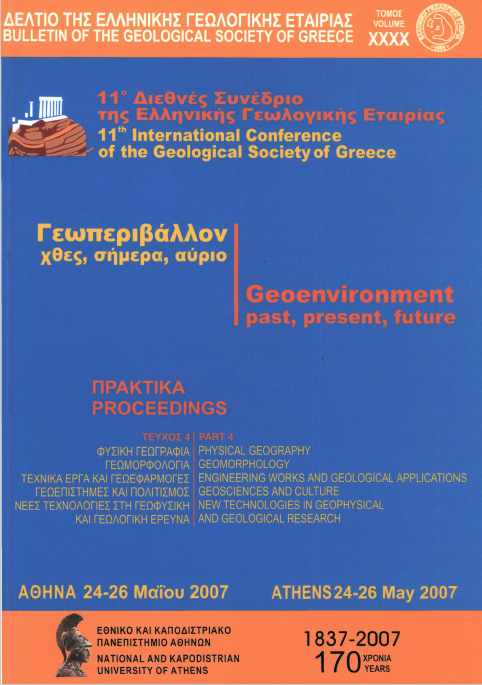LABORATORY INVESTIGATION ON THE CORRELATION BETWEEN THE FRICTION ANGLE OF ROCK JOINTS AND THE CONSTANT MI OF THE HOEK AND BROWN CRITERION

Abstract
A correlation between the non-dilational friction angle (φm) of rock discontinuities and the constant mi of the Hoek and Brown criterion for intact rock is investigated, using the results of a focus oriented laboratory program. The program consisted of two types of laboratory tests: a series of triaxial compression tests on intact rock samples for the determination of the constant mi and an independent series of direct shear tests on tensile fractures of the same rock types for the determination of the rock joint friction angle φm. Four typical rock types from Northern Greece were used: a granite, a sandstone, a limestone and a marble, covering a range of mi between 8 and 34, and an unconfined compressive strength between 60 and 120 MPa. Apart from the certain range of parameters that is presented for this specific rocks, the experimental results show that the non-dilational friction angle of the rock fracture determined by direct shear testing (φm) decreases logarithmically with the value of the constant mi.
Article Details
- How to Cite
-
Tsikrikis, A., Papaliangas, T., & Marinos, V. (2016). LABORATORY INVESTIGATION ON THE CORRELATION BETWEEN THE FRICTION ANGLE OF ROCK JOINTS AND THE CONSTANT MI OF THE HOEK AND BROWN CRITERION. Bulletin of the Geological Society of Greece, 50(2), 987–994. https://doi.org/10.12681/bgsg.11803
- Section
- Engineering Geology, Hydrogeology, Urban Geology

This work is licensed under a Creative Commons Attribution-NonCommercial 4.0 International License.
Authors who publish with this journal agree to the following terms:
Authors retain copyright and grant the journal right of first publication with the work simultaneously licensed under a Creative Commons Attribution Non-Commercial License that allows others to share the work with an acknowledgement of the work's authorship and initial publication in this journal.
Authors are able to enter into separate, additional contractual arrangements for the non-exclusive distribution of the journal's published version of the work (e.g. post it to an institutional repository or publish it in a book), with an acknowledgement of its initial publication in this journal. Authors are permitted and encouraged to post their work online (preferably in institutional repositories or on their website) prior to and during the submission process, as it can lead to productive exchanges, as well as earlier and greater citation of published work.




